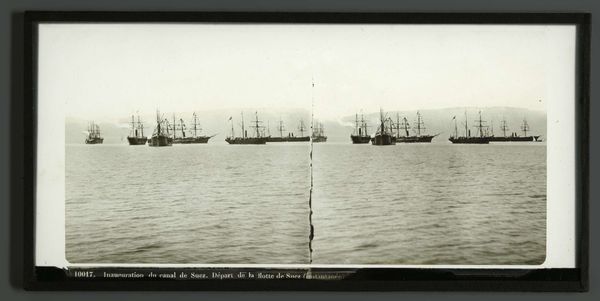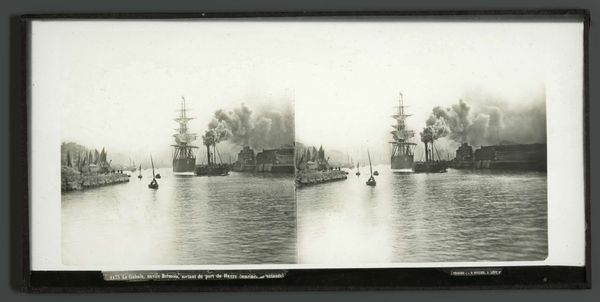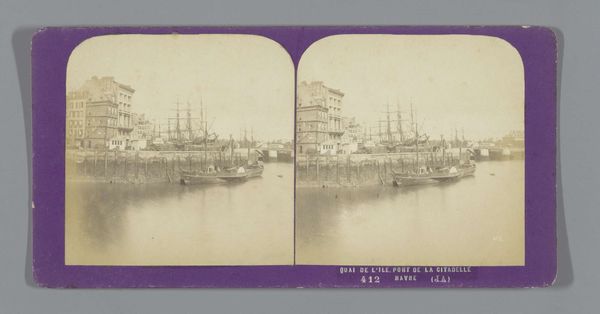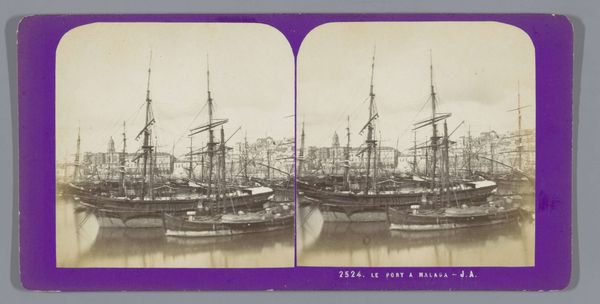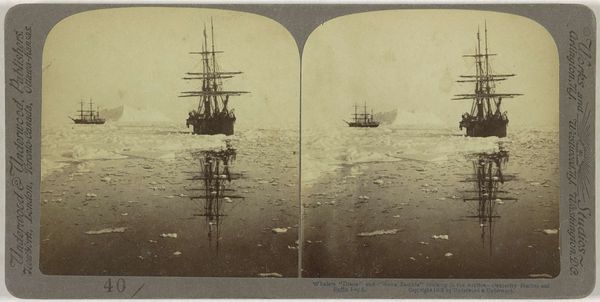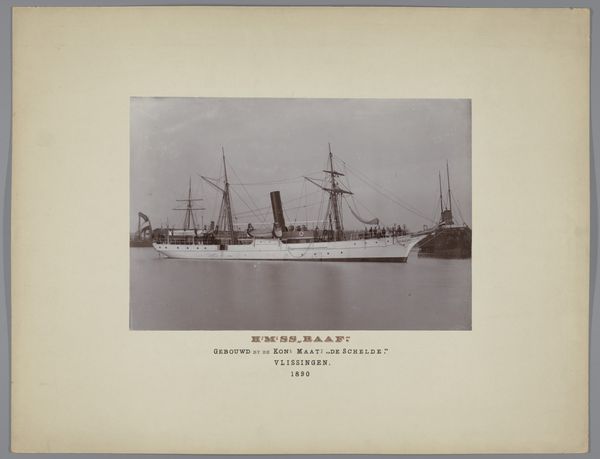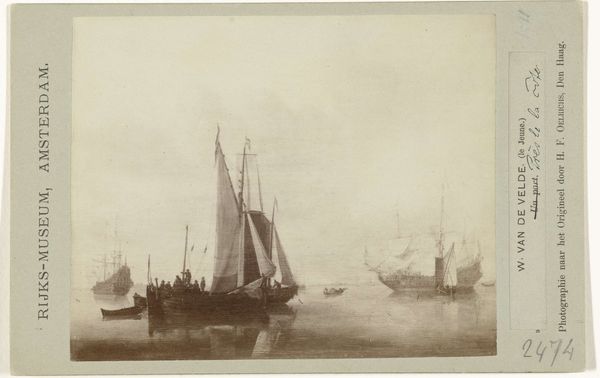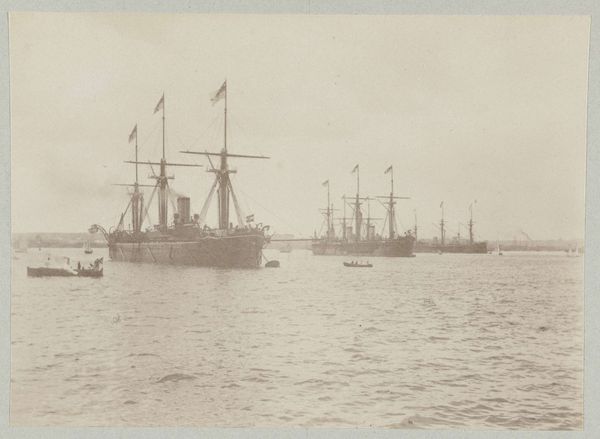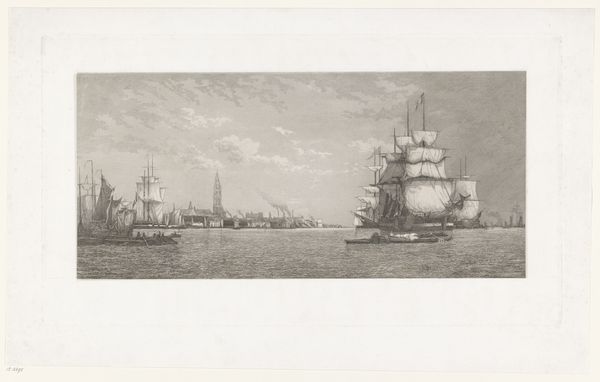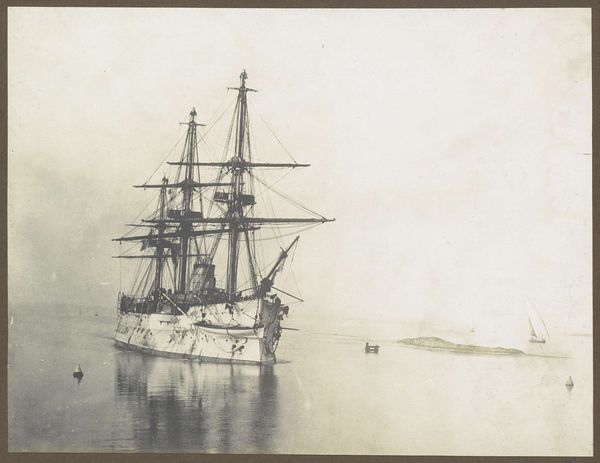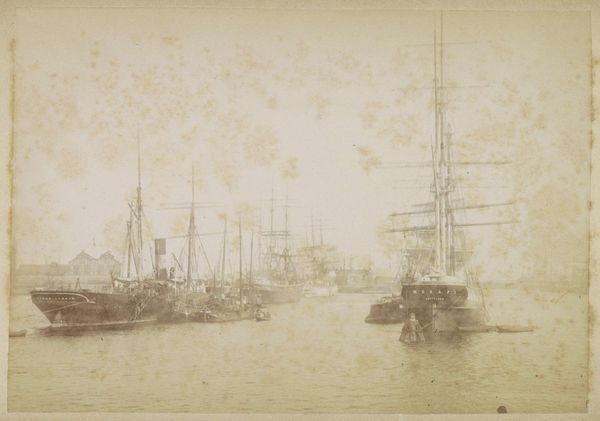
photography, gelatin-silver-print
#
landscape
#
photography
#
gelatin-silver-print
#
cityscape
#
realism
Dimensions: height 84 mm, width 171 mm
Copyright: Rijks Museum: Open Domain
Curator: Here we have a photograph, a gelatin-silver print entitled "Zeegezicht in de haven van Le Havre," or "Seascape in the port of Le Havre" attributed to Ferrier Père-Fils et Soulier, dating from about 1855 to 1865. It’s quite remarkable, isn’t it? Editor: Absolutely. It evokes this almost ghostly feel, with those ships fading into the misty background. It makes me wonder, were they arriving or departing, or just patiently waiting? The glassy water sort of mirrors that ambiguity, I think. Curator: The image certainly captures a period of intense transformation within port cities like Le Havre. Think about it, this photograph emerges just as industrial shipping begins to reshape global trade networks. Consider the colonial implications, and the shifts in labor dynamics. Editor: Oh, that’s so true. The scale here really gets you— the vessels poised against this backdrop of smoke… it suggests so many things! Are we seeing a burgeoning new power, or a vanishing age? I mean, ships sailing with and against smoke, a metaphor if there ever was one! Curator: Indeed. Furthermore, it is important to consider how early photographic processes reinforced prevailing social hierarchies. The technology, expensive and requiring considerable expertise, inevitably restricted who had the power to represent themselves and their world. These are typically upper class images, literally capturing capitalistic power. Editor: That's a fascinating angle. Looking at it again with that in mind, it definitely gains another layer. So, maybe those boats are full of all these assumptions, all these hopes, too. Did photography back then change how people thought of power? Were they thinking 'the whole world will see!' I would bet it did something profound to folks expectations. Curator: Precisely. We're seeing the intersection of art, technology, and socio-political currents, a perfect distillation of Realism that reflects on power and ownership during industrialization. Editor: The more I look, the more stories bloom in my head. It’s moody, mysterious, a little haunting... This single image feels so big because of those connections, doesn’t it? So grateful for this moment with the history! Curator: Yes, and I hope visitors appreciate the profound narrative interwoven within what seems like a simple seascape, and, critically, keep the ethics and power implications of representation at the forefront of their reading.
Comments
No comments
Be the first to comment and join the conversation on the ultimate creative platform.

